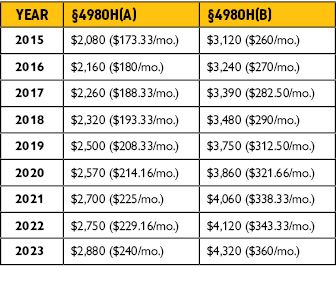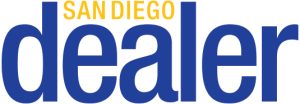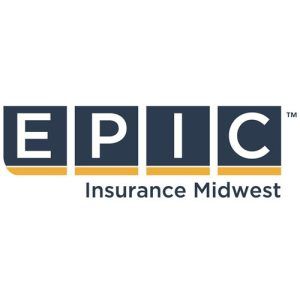Are you sure your dealership is in compliance? Have you received an IRS 226J letter? IRS Penalties for ALE’s (Applicable Large Group Employers) not offering Affordable Health Coverage.
Background
As the IRS continues to actively enforce the employer shared responsibility payments and associated employer reporting requirements, we are reminded that the employer mandate under §4980H of the ACA (Affordable Care Act) remains in effect and requires compliance to avoid potential penalties. ALEs who fail to comply with §4980H offer of coverage requirements may face penalties for full-time employees who enroll in subsidized coverage through a public Exchange.
Q: Is Your Dealership an ALE?
A: Status as an ALE is determined based on data from the previous calendar year, regardless of the employer’s group health plan year. It doesn’t matter whether the employer exceeded 50 FTEs (Full-Time Eligible Employees) in any given month, but whether the employer averaged 50 or greater FTEs over all 12 months of the previous calendar year.
Important to note if a Multi Dealership Group: When more than one entity is involved due to common ownership or shared services (e.g., a controlled group or affiliated service group under §414 rules), the entities must aggregate FTEs to determine the average for the previous calendar year. If the combined entities average 50 or greater FTEs (an “aggregated ALE group”), then each entity is an ALE, subject to §4980H offer of coverage requirements and §6056 employer reporting requirements for the following calendar year.
Q: What Are the §4980H Offer of Coverage Requirements?
A: The offer of coverage requirements for ALEs under §4980H are as follows:
- §4980H(a) — ALEs must offer minimum essential coverage (MEC) to at least 95% (or all but five, if greater) of full-time employees and their dependent children each month. An offer of coverage is not required for spouses.
- §4980H(b) — ALEs must offer coverage that provides minimum value AND is affordable to all full-time employees each month. There is not a 5% “margin of error” for §4980H(b) requirements like there is under §4980H(a).
Q: How Do You Determine Affordability?
A: Affordability is generally determined by applying the applicable affordability percentage, which changes yearly, to an individual’s household income. If the employee contribution for the lowest-cost minimum value plan for self-only coverage does not exceed the applicable affordability percentage of the employee’s household income, the coverage is affordable.
However, because an employer will not typically know household income, the employer is protected from any potential penalties under §4980H(b) so long as the coverage is affordable under one of three safe harbors. Employers may use any of the affordability safe harbors for any reasonable category of employees, provided the safe harbor applies on a uniform and consistent basis for all employees in a category. The affordability safe harbors are as follows:
- Federal poverty level (FPL) safe harbor: Employee contribution for single, minimum value coverage does not exceed the applicable affordability percentage of FPL for a single individual.
- Rate of pay safe harbor: Employee contribution for single, minimum value does not exceed the applicable affordability percentage of hourly rate x 130 (or monthly salary).
- Form W-2 safe harbor: Employee contribution for single, minimum value coverage does not exceed the applicable affordability percentage of the employee’s Box 1 wages.
Q: How Much Are the §4980H Penalties (Employer Shared Responsibility Payments)?
A: §4980H(a) — If the employer fails to offer MEC to at least 95% (or all but five, if greater) of full-time employees, a penalty will apply if any full-time employee enrolls through a public Exchange and qualifies for a premium tax credit. The penalty is multiplied by the total full-time employee count minus the first 30, regardless of how many employees were offered coverage. Penalty calculation = (full-time employee count – 30) * §4980H(a) penalty.
§4980H(b) — If the employer satisfies §4980H(a) requirements, they may still owe a penalty for any full-time employee who is not offered minimum-value, affordable coverage if that employee enrolls through a public Exchange and qualifies for a premium tax credit. This penalty applies on a per-employee basis rather than against the total full-time employee count.
Penalty calculation = §4980H(b) penalty for each full-time employee who is not offered minimum-value, affordable coverage who enrolls through a public Exchange and qualifies for a premium tax credit.

If you are not sure your dealership is in compliance and have concerns about penalties, fines, or have not had a compliance audit done in the last year, EPIC will perform a compliance audit at no cost to NCDA members.
EPIC ranks among the top 15 retail insurance brokers in the United States and is the largest insurer of auto dealers in the state. Alison McCallum has been in the employee benefits industry for over 20 years and personally works with more than 60 Southern California Dealerships. She is a Principal with EPIC Insurance Brokers and Consultants, the only NCDA-licensed broker. With this partnership, EPIC offers unique services available to NCDA dealer members at no cost. If you have questions or would like further information, please feel free to contact her at (949) 417-9136 or alison.mccallum@epicbrokers.com.








